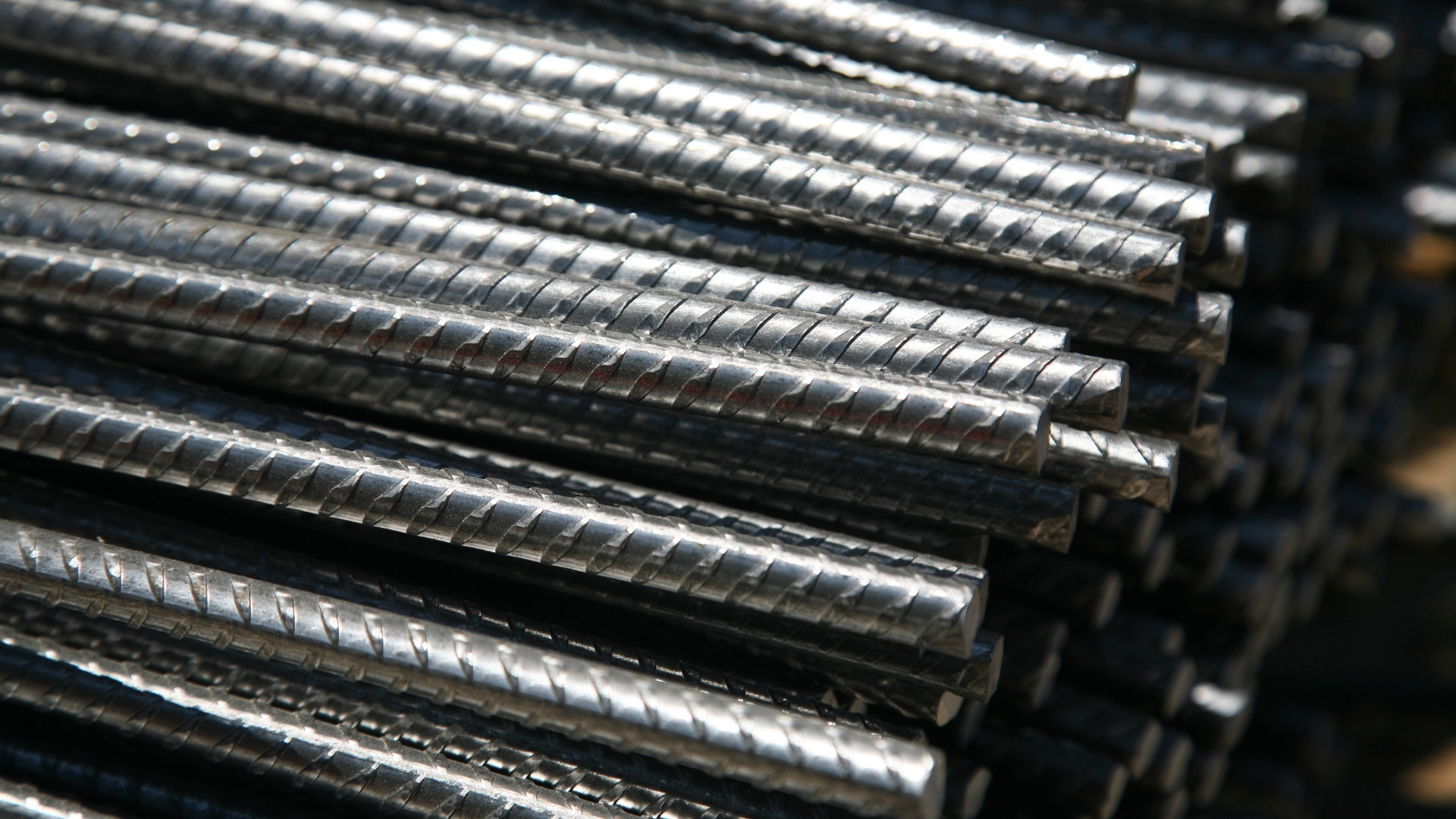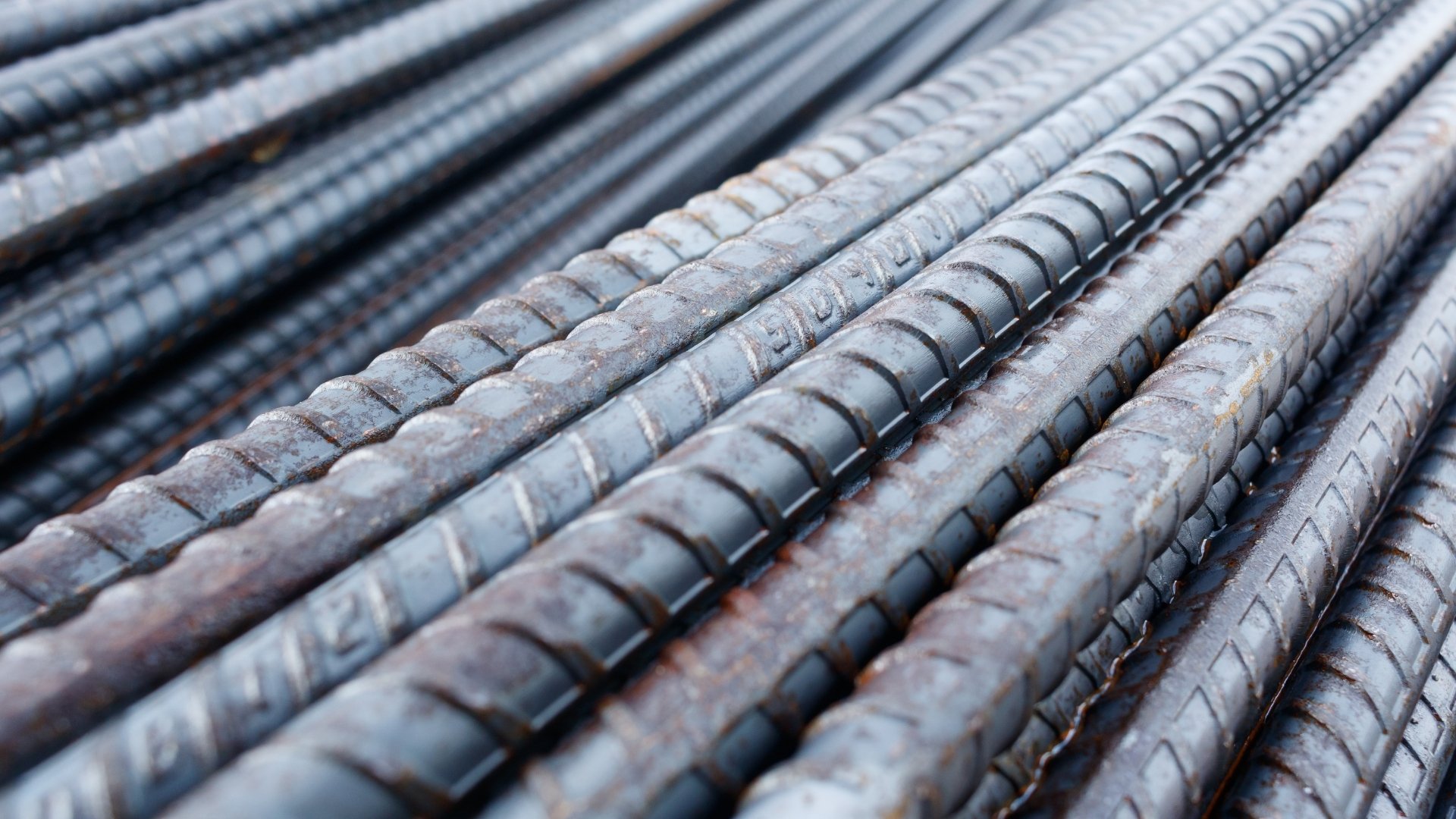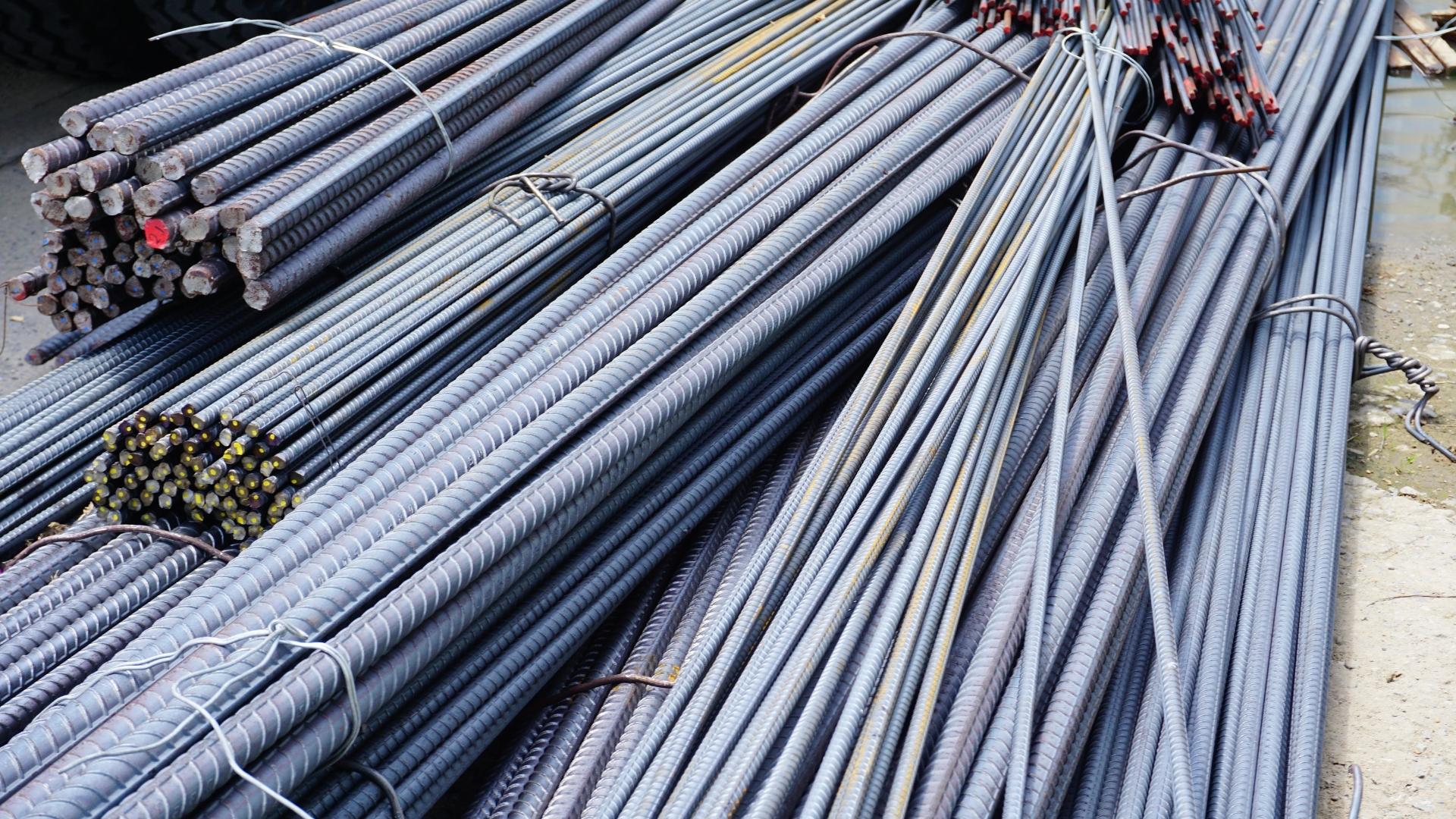How to Calculate TMT Bar Weight: A Simple Guide

Every builder knows that a strong structure starts with the right steel. Among the various types of steel bars available, Mild Steel (MS) bars, deformed bars, and rebars,TMT barshave emerged as the preferred choice for modern construction projects.Their superior strength, ductility, and corrosion resistance make them ideal for both high-rise buildings and large infrastructure projects.
During the first quarter of FY25, India produced 36.61 million tonnes of crude steel, reflecting the ongoing growth in the construction and manufacturing sectors. For contractors, architects, and builders, understanding how to calculate the steel bars weight, especially for TMT bars, is essential to avoid overbuying, underestimating, or running into costly mistakes on-site.
In this guide, you will learn how to calculate steel bar weight accurately, understand its importance, and use standard formulas for efficient project planning.
Key Takeaways
-
Understanding steel bars' weight is crucial for accurate material estimation, cost planning, and maintaining structural safety.
-
Using a steel bar weight chart helps quickly determine the weight of different TMT, MS, and deformed bars for any project.
-
Calculating the unit weight of steel bars with standard formulas ensures precise procurement, avoids wastage, and reduces project costs.
-
Selecting the right TMT bar grade and diameter (like Fe500D for earthquake-resistant buildings or Fe550D for heavy infrastructure) ensures long-term durability and load-bearing efficiency.
What Are TMT Bars And Why Do They Matter In Construction?
Thermo-Mechanically Treated (TMT) bars are high-strength reinforcement steel bars used in construction. They undergo a specialised manufacturing process involving heating, quenching, and tempering, which imparts a tough outer layer and a soft inner core. This unique structure enhances their strength, ductility, and resistance to corrosion and high temperatures.
TMT bars are crucial in construction due to their exceptional properties:
-
High Strength and Ductility: They can withstand heavy loads and seismic forces without breaking or bending.
-
Corrosion Resistance: Their resistance to rust and corrosion ensures longevity, especially in coastal regions of Maharashtra, where high humidity and salty air can accelerate steel degradation.
-
Better Bonding with Concrete: The ribs on TMT bars provide better grip, enhancing the bond with concrete and improving overall structural stability.
Understanding The Unit Weight Of Steel Bars
In construction, accurately determining the weight of steel bars is important for material estimation, budgeting, and ensuring structural integrity. The unit weight of a steel bar refers to its weight per unit length, typically measured in kilogrammes per metre (kg/m). This measurement is essential for engineers, architects, and builders to plan and execute projects efficiently.

For example, if a contractor underestimates the weight of steel bars needed for a foundation, they may end up ordering fewer bars than required. This not only delays the project due to reordering but also increases costs from fluctuating steel prices and transportation. On the other hand, overestimating leads to excess purchases, tying up unnecessary capital, and creating storage issues on-site.
Here's why calculating unit weight is important:
-
Material Estimation: Knowing the unit weight helps in estimating the total amount of steel required for a project, aiding in accurate procurement planning.
-
Costing and Budgeting: Accurate weight calculations allow for precise costing, helping to avoid over-ordering or under-ordering materials.
-
Structural Integrity: Ensuring the correct amount of steel is used maintains the strength and safety of the structure.Steel Bars Weight Chart
Looking for reliable steel procurement for your project?
Ensure you get the right steel bars at competitive prices with Steeloncall.
[Contact Us]
Let’s take a closer look at steel bars weight charts and how they can simplify construction planning.
Steel Bars Weight Charts
Before diving into how to calculate the unit weight of steel bars, it’s helpful to refer to a steel bars weight chart. These charts provide a quick reference for TMT bars, MS round bars, deformed bars, and other commonly used steel types.
Use these charts to quickly find the weight corresponding to bar diameter and length, aiding in fast material estimation.
TMT Bar Weight Chart
(Updated July 2025 | Weights shown in kg, standard length: 12 metres)
| Diameter (mm) | Weight of a single bar (12m) | Number of bars in a bundle | Unit weight per metre (kg/m) | Number of bars in a ton | Approx Price (₹/kg) |
| 8 | 4.74 | 10 | 0.395 | 211 | ₹47.9 |
| 10 | 7.41 | 10 | 0.617 | 135 | ₹47.9 |
| 12 | 10.67 | 10 | 0.889 | 93 | ₹47.9 |
| 16 | 18.96 | 5 | 1.580 | 52 | ₹46.8 |
| 20 | 29.63 | 5 | 2.469 | 34 | ₹46.8 |
| 25 | 46.30 | 2 | 3.858 | 22 | ₹55.5 |
| 32 | 75.85 | 2 | 6.321 | 13 | ₹55.5 |
| 36 | 96.00 | 1 | 8.000 | 10 | ₹55.5 |
Note: The above values are indicative. Always confirm exact weight, price, and specifications with your steel supplier.
How to Calculate Steel Bars' Unit Weight?
Accurately calculating the unit weight of steel bars is one of the most important steps in construction planning. Since steel contributes heavily to the overall project cost, even small errors in weight estimation can affect procurement, budgeting, and safety standards.
In fact, as part of the Production-Linked Incentive (PLI) Scheme for speciality steel, the Government of India projects that speciality steel output will touch 42 million tonnes by 2026-27, highlighting how essential precise measurements are for cost control and structural efficiency.
Formula for Unit Weight of steel Bars
Most reinforcement bars used in construction come with a circular cross-section, making them easier to calculate using standard formulas. The calculation is based on a simple relationship between volume and density, which gives the unit weight of steel.
The general formula is:
Weight = Volume × Density
-
Volume: Derived from the length (L) and cross-sectional area (A) of the bar
-
Cross-sectional area (A): πr², where r = radius = half of the diameter (D/2)
-
Density of steel: 7850 kg/m³ (standard value for structural steel)
When simplified, the full formula for round bars becomes:
Weight = (π × D² / 4) × L × 7850 × 10⁻⁶
Where:
-
D = diameter of bar in mm
-
L = length in metres
Practical Example: Calculating the Weight of a 12 mm TMT Bar
In Indian construction, 12 mm TMT bars are widely used in beams, columns, and footings for strength and load support. Let’s take a 12 mm diameter bar of 10 metres in length to see how this works in practice.
Step 1: Understand the given dimensions
-
Length (L) = 10 m
-
Diameter (D) = 12 mm = 0.012 m
-
Radius (r) = 6mm or 0.006 m (D/2)
The radius is important because the area of a circle is calculated from it.
Step 2: Calculate the cross-sectional area
Formula: Area = πr²
-
Area = 3.1416 × (0.006)²
-
Area = 0.000113 m²
This tells you the surface size of the circle at the bar’s end.
Step 3: Work out the volume of the bar
Formula: Volume = Area × Length
-
Volume = 0.000113 × 10
-
Volume = 0.00113 m³
This is the 3D space the bar occupies.
Step 4: Multiply by steel’s density to get weight
Formula: Weight = Volume × Density
-
Density of steel = 7850 kg/m³
-
Weight = 0.00113 × 7850
-
Weight = 8.87 kg
The density tells us how heavy each unit of steel is. Multiplying it by the volume gives the actual bar weight.
Final Answer: A 12 mm diameter, 10 m long TMT bar weighs about 8.87 kg.
In India, knowing the weight of a 12 mm TMT bar allows builders to plan transportation, storage, and on-site handling efficiently. It also helps in budgeting for material costs, scheduling manpower for installation, and ensuring compliance with safety standards in reinforced concrete construction.
Sample Of Unit Steel Bar Weight Chart With Prices (July 2025)
When planning construction projects, having a ready reference for steel bars makes cost estimation much easier. Knowing how much a bar weighs helps you calculate material requirements, transport loads, and most importantly, the cost. Prices of steel vary depending on market conditions.

Below is a table highlighting the unit weight in kg for 12 mm steel bars and the approximate cost, so you can quickly assess how much a particular size will cost for your project.
| Radius | Unit weight in kg | Approx. Price |
| 4 mm | 4.74 kg | ₹227.45 |
| 5 mm | 7.40 kg | ₹354.46 |
| 6 mm | 10.65 kg | ₹510.54 |
| 8 mm | 18.94 kg | ₹907.63 |
| 10 mm | 29.59 kg | ₹1,416.44 |
| 11 mm | 35.81 kg | ₹1,714.35 |
| 12.5 mm | 46.24 kg | ₹2,215.90 |
| 16 mm | 75.76 kg | ₹3,627.89 |
Note: This chart is for general reference only. Please confirm the exact size and weight with your steel supplier.
Need trusted suppliers for your project?
Steeloncall offers verified suppliers, live pricing, and doorstep delivery for hassle-free procurement.
[Contact Us]
Grades And Sizes Of Steel Bars As Defined By Indian Standards
Every construction project requires steel that not only fits the design but also meets safety and quality benchmarks. In India, the Bureau of Indian Standards (BIS) issues detailed specifications for both the sizes and grades of steel bars, ensuring uniformity across the industry. Following these standards is crucial because it directly affects the load-bearing capacity, durability, and safety of structures.
The most widely used code for reinforcement bars is IS 1786:2008.
Steel Bar Size Groups (IS 1786:2008)
Steel bars are divided into groups based on their nominal diameter:
-
Group I: 4 mm, 5 mm, 6 mm
-
Group II: 8 mm, 10 mm, 12 mm, 16 mm, 20 mm, 25 mm, 28 mm, 32 mm
-
Group III: 36 mm, 40 mm, 45 mm, and 50 mm
Steel Bar Strength Grades (IS 1786:2008)
Bars are also classified by their yield strength, which determines how much stress a bar can withstand before deforming. The standard grades include:
| Group | Strength grade |
| Group 1 | Fe 415, Fe 415D, Fe 415S |
| Group 2 | Fe 500, Fe 500D, Fe 500S |
| Group 3 | Fe 550, Fe 550D |
| Group 4 | Fe 600 |
| Group 5 | Fe 650 |
| Group 6 | Fe 700 |
Knowing the grades and sizes of steel bars helps you calculate the steel bars' weight accurately. With this foundation, it becomes easier to see how different types of steel bars are applied across various construction projects, and why choosing the right grade and size matters for every application.
Key Applications Of Steel Bars
Steel bars are everywhere in construction. As India’s steel demand continues to climb, with construction and infrastructure together using over 65% of that demand, knowing where steel bars are applied helps you plan better, buy smarter, and build stronger.
Below are the main areas where TMT, MS, or deformed steel bars play a vital role, and you’ll see why accurate estimates of steel bar weight become so crucial in each.
1.Residential and Commercial Buildings
From homes and apartment complexes to offices and shopping centres, steel bars are used in the framework of columns, beams, and slabs. They help structures withstand loads, shrinkage, and thermal expansion. Fe500D TMT bars are particularly suited for high-rise residential towers and earthquake-prone zones, as their mix of strength and ductility ensures both safety and flexibility.
2. Rods and Highways
Reinforcement is essential in bridges, flyovers, overpasses, culverts, and even in concrete road surfaces or shoulders. These need steel bars to handle traffic loads, vibrations, and weather wear.
3. Industrial Facilities and Power Plants
Factories, warehouses, cooling towers, chimneys, boilers, and platforms rely on steel bars to support heavy machines, elevated loads, and thermal stresses. TMT bars are preferred for their strength under pressure and heat.
4. Bridges, Viaducts, and Flyovers
Large-scale structures face constant stress from traffic loads, wind, and seismic activity. Steel reinforcement ensures durability and stability. Fe550D TMT bars are widely used here because of their superior load-bearing strength, making them the right choice for large infrastructure projects like metro bridges, expressways, and heavy-duty flyovers.
5. Dams and Water Containment Structures
Spillways, retaining walls, water tanks, and sluice gates need steel reinforcement to handle water pressure, hydrostatic forces, and potential fluctuations in load.
6. Railways and Metro Networks
From sleeper foundations to overhead structures and elevated sections, railways and metros use steel bars extensively to handle dynamic loads and provide long service life.
7. Special Structures
Projects such as tunnels, stadiums, long-span roofing systems, and super-tall building cores often require specialised grades and sizes of steel bars. In these cases, a combination of Fe500D and Fe550D TMT bars is used to balance flexibility, ductility, and immense strength, depending on structural needs.
How To Choose The Right TMT Bar For Your Construction Needs
Selecting the right TMT bar is one of the most important decisions in any construction project. The type and grade of bar you choose directly affect the safety, durability, and cost efficiency of your structure.

Below are the key factors you should consider before making a choice:
-
Project Scale and Structural Loads
Large-scale projects like bridges, dams, and metro networks demand bars with high tensile strength, such as Fe550D, to handle heavy loads. Use thinner bars such as 8mm or 10mm for lighter construction work, and opt for thicker bars like 12mm or 16mm when handling larger or more demanding projects.
-
Steel Grade Selection
Different grades (Fe415, Fe500, Fe500D, Fe550D) are designed for specific purposes. Higher grades mean higher strength but slightly less ductility, which is why it’s important to match the grade to the type of structure.
-
Seismic and Climate Factors
Areas with seismic activity or extreme weather demand bars that can resist stress without cracking. Fe500D TMT bars are engineered for flexibility under such conditions, ensuring that buildings and bridges can absorb shocks and vibrations safely. In coastal regions, corrosion resistance is another vital factor, making corrosion-resistant TMT bars a smarter option.
-
Cost Efficiency and Value
While higher-grade bars may appear more expensive initially, they often reduce long-term costs by lowering material wastage, enhancing safety, and minimising repair expenses. For reliable, high-quality TMT bars at competitive prices with hassle-free delivery, you can explore the range available at SteelonCall, India’s leading online steel marketplace.
Final Thoughts
Accurately calculating steel bars' weight is important as it directly impacts your project’s safety, efficiency, and budget. Understanding bar grades, diameters, and their weight per metre helps you plan better, avoid wastage, and ensure every structure you build stands strong.
If you are looking for reliable and high-quality steel, SteelonCall makes procurement simple with verified suppliers, competitive prices, and doorstep delivery.
Need Steel for Your Next Project?
Get expert advice and top-quality steel delivered directly to your site!
[Contact Us]
FAQS
1.How many kg Iis a 12mm steel bar?
A 12mm diameter TMT steel bar weighs approximately 0.888 kg per metre. This is calculated using the formula: Weight (kg) = (Diameter² × Length) / 162, where diameter is in millimetres and length in metres.
2. What is the weight of a steel bar?
The weight of a steel bar depends on its diameter and length. The standard formula to calculate it is: Weight (kg) = (Diameter in mm)² × Length in metres ÷ 162. This gives the weight in kilogrammes for TMT bars.
3. How much is 1 kg of steel?
1 kg of steel is simply one kilogram by mass, which is a standard unit of weight. The price or volume of 1 kg of steel varies depending on the type and market conditions.
4. How to calculate the weight of TMT bars in a bundle?
To find the total weight of TMT bars in a bundle, multiply the weight of one bar by the number of bars in the bundle. Use the formula Weight per bar = (Diameter² × Length) / 162, then multiply by the quantity.
5. What is the formula to calculate TMT bar weight?
The commonly used formula is: Weight (kg) = (Diameter in mm)² × Length in metres ÷ 162. This formula helps quickly estimate the weight of any TMT bar based on its size and length.
6. Why is calculating TMT bar weight important?
Accurate weight calculation ensures proper estimation of material costs, transportation, and structural integrity in construction projects. It helps avoid wastage and ensures compliance with design specifications.




